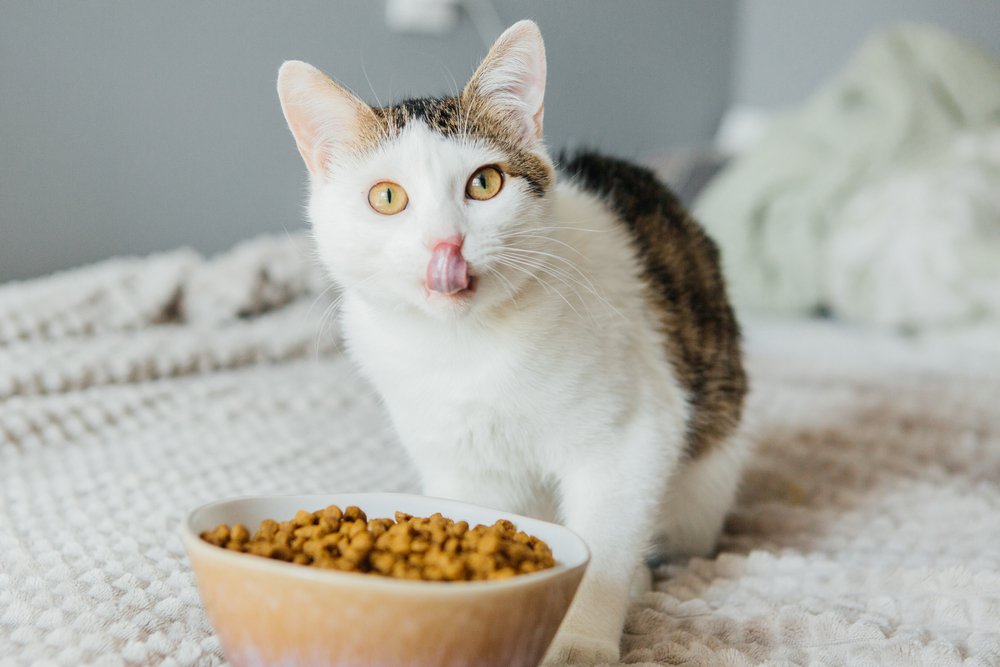Cat Won’t Eat Wet Food? Discover the Surprising Reason and Find Solutions. Is your cat refusing to eat wet food? Uncover the surprising reason behind this behavior and explore solutions to ensure your cat’s health and happiness. Find expert tips and advice for enticing your cat to enjoy wet food again!
Cat owners may have encountered a frustrating situation: your furry friend suddenly refuses to eat their beloved wet food. It can be worrisome and leave you wondering why your cat’s preferences have changed. In this blog, we will delve into the surprising reason behind your cat’s refusal to eat wet food. From understanding their natural instincts to exploring potential health concerns, we’ll provide expert advice and practical solutions to ensure your cat’s health and happiness.
Natural Instincts:
Cats have innate instincts and preferences when it comes to their food. Some cats have a strong preference for specific textures or flavors, and their preferences can change over time. It’s possible that your cat has developed a preference for dry food or has become more selective about the texture and aroma of their wet food.
Dental Health:
Dental issues can affect a cat’s ability to chew and enjoy wet food. If your cat is experiencing dental pain or discomfort, they may avoid wet food, which requires more chewing. Regular dental check-ups and dental care can help address any dental issues and improve your cat’s appetite for wet food.
Food Temperature and Presentation:
Cats are known for their sensitivity to food temperature and presentation. They may prefer their wet food served at room temperature or slightly warmed to enhance the aroma and flavor. Experiment with different temperatures and presentation styles, such as using shallow bowls or puzzle feeders, to make the wet food more appealing to your cat.
Food Texture and Consistency:
The texture and consistency of wet food can play a significant role in your cat’s willingness to eat it. Some cats prefer pâté-style food, while others prefer chunks or shreds. Try offering different textures and varieties to see what your cat prefers. Mixing dry food with wet food or adding a small amount of water to wet food can also alter the texture and make it more appealing to your cat.
Health Concerns:
If your cat’s refusal to eat wet food is accompanied by other changes in behavior or appetite, it’s crucial to rule out any underlying health concerns. Conditions such as dental disease, gastrointestinal issues, or even stress can affect a cat’s appetite. If you notice any concerning symptoms or a prolonged lack of appetite, consult your veterinarian for a thorough examination and appropriate treatment.

Conclusion:
The refusal to eat wet food can be puzzling for cat owners, but understanding the reasons behind it can help you address the issue effectively. By considering your cat’s natural instincts, dental health, food temperature, presentation, texture, and potential health concerns, you can find solutions to entice your cat to enjoy wet food again. Remember to be patient and persistent in finding the right approach for your cat, and consult with your veterinarian for personalized advice based on your cat’s specific needs.
FAQs:
Q.1: How can I transition my cat from dry food to wet food?
To transition your cat from dry food to wet food, start by mixing a small amount of wet food with their current dry food. Gradually increase the proportion of wet food over several days or weeks until your cat is fully transitioned. Remember to monitor your cat’s response and consult with your veterinarian for guidance.
Q.2: Can I mix wet food with dry food?
Mixing wet food with dry food can be a helpful strategy to entice your cat to eat wet food. Start by adding a small amount of wet food to the dry food and gradually increase the proportion over time. This can help your cat become accustomed to the taste and texture of wet food while still providing the familiarity of dry food.
Q.3: Are there any additives or supplements I can add to wet food to make it more appealing?
There are certain additives or supplements that you can try to enhance the flavor and appeal of wet food. For example, you can sprinkle a small amount of nutritional yeast or low-sodium chicken broth on top of the wet food to make it more enticing for your cat. However, it’s important to consult with your veterinarian before adding any additives or supplements to ensure they are safe and suitable for your cat.
Q.4: Should I be concerned if my cat refuses to eat wet food for an extended period?
If your cat refuses to eat wet food for a prolonged period or if it is accompanied by other concerning symptoms, it is recommended to consult with your veterinarian. They can evaluate your cat’s overall health and determine if any underlying issues need to be addressed. A sudden and persistent refusal to eat can be a sign of an underlying medical condition that requires attention.
Q.5: Can I switch to a different brand or flavor of wet food?
Yes, you can try switching to a different brand or flavor of wet food to see if it appeals to your cat’s taste preferences. Cats can have individual preferences when it comes to flavors and textures, so experimenting with different options can help you find a wet food that your cat enjoys. Gradually introduce the new food and monitor your cat’s response to ensure they tolerate the new brand or flavor well.










